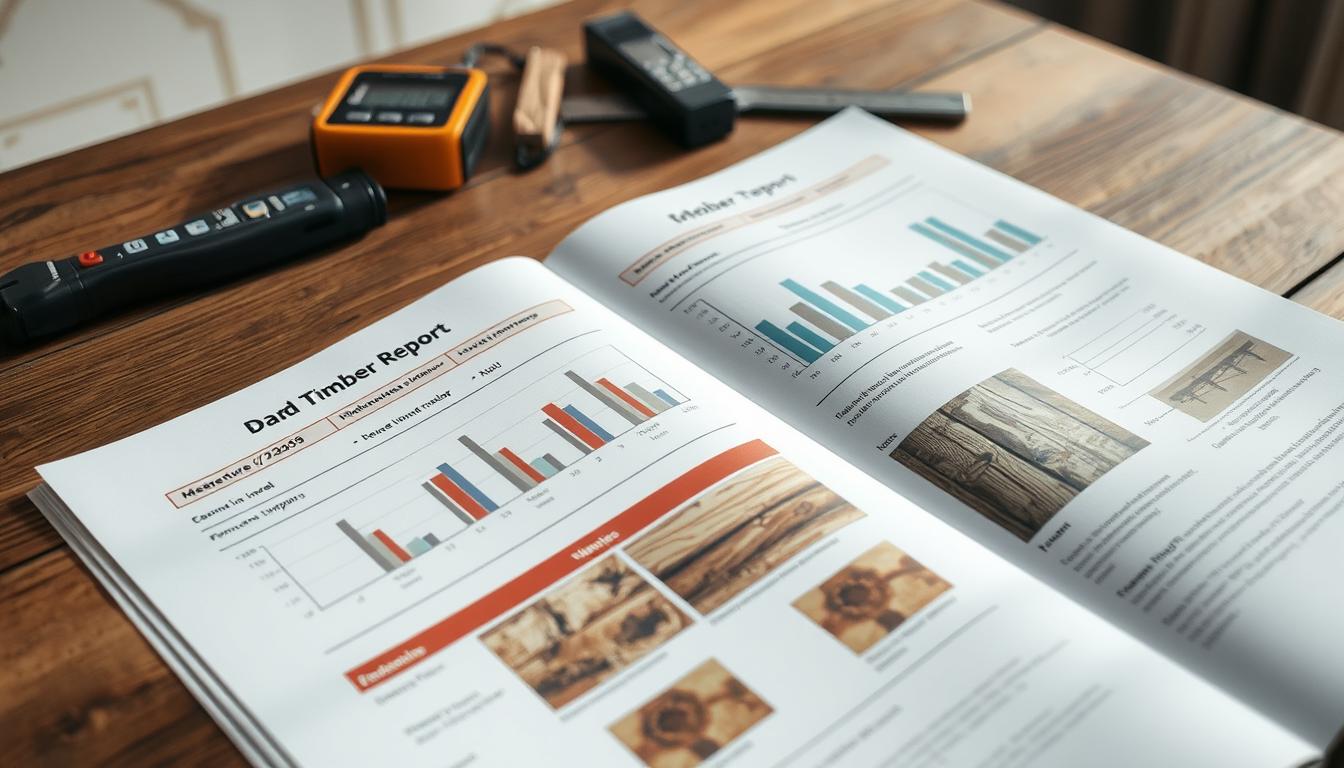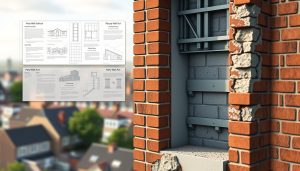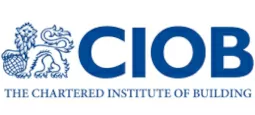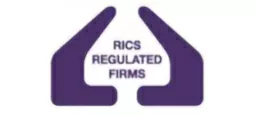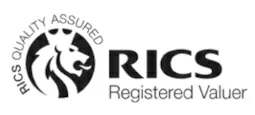A damp and timber report is vital for spotting structural and foundation problems in a property. The price of such a report varies based on the property’s size, location, and the depth of the inspection needed. For a detailed look at the cost, visit damp survey cost for further insights.
In 2020, 3.4% of the UK’s 24.7 million homes faced damp issues, underlining the necessity of regular assessments. These reports check for rising damp, woodworm, and dry rot, common problems in UK homes.
For a typical 3-bedroom semi-detached home, the cost of a damp and timber report ranges from £500 to £1,000. It’s important to note that prices under £500 might suggest subpar diagnostics. It’s advisable to steer clear of such services.
Key Takeaways
- A damp and timber report is essential for identifying structural and foundation issues.
- The cost of a damp and timber report varies by property size and location.
- Regular assessments can prevent major structural problems and high repair costs.
- Prices under £500 for damp and timber reports may indicate poor quality diagnostics.
- Untreated damp can significantly increase repair costs over time.
- Good communication and transparency are key to customer satisfaction in damp and timber reports.
Understanding Damp and Timber Reports: An Overview
A damp and timber survey is essential for identifying structural and foundation issues in properties. The significance of these reports is immense, as they offer a thorough analysis of a property’s state. They pinpoint any issues that could impact its value or stability.
A certified surveyor conducts the assessment, evaluating the property’s condition and suggesting necessary repairs or upkeep. This evaluation typically spans 1 to 3 hours, contingent on the property’s size and the extent of the issues. The survey’s cost varies, influenced by the property’s dimensions and location, ranging from £500 to £1,000.
Several critical aspects must be considered regarding damp and timber surveys:
- Properties built before modern building standards should undergo timber and damp surveys.
- The CSRT qualification stands as the sole nationally recognized credential for damp and timber decay/infestation expertise.
- Engaging in a paid, independent damp survey can avert the need for costly chemical treatments, saving on long-term expenses.
Investing in a damp and timber survey allows property owners to identify and rectify issues promptly. This proactive approach prevents expensive repairs and potentially catastrophic structural failures. The value of these reports is undeniable, necessitating collaboration with a skilled and seasoned surveyor for an accurate property condition assessment.
Typical Damp and Timber Report Cost in the UK
The cost of a damp and timber report in the UK varies widely. It depends on the property’s size, location, and the inspection’s depth. Typically, the price ranges from £500 to £1,000 or more. For example, a damp survey with thermal imaging for a two-bedroom flat in the South East costs around £750.
A damp and timber report cost UK is influenced by several factors. These include the property type and the surveyor’s expertise. While some surveyors may charge more, the long-term benefits of a detailed report are significant. Remember, the cost of the report is a small price compared to the expenses of fixing or maintaining a property with damp or timber issues.
Here are some estimated costs for different types of damp and timber surveys:
- Basic damp and timber survey: £500
- Damp survey with thermal imaging: £750
- Comprehensive survey by a specialist: £1,000 or more
Choosing a qualified surveyor is critical. They should offer an unbiased, detailed assessment of the property’s condition. Investing in a quality damp and timber report allows owners to make informed decisions. This can save thousands of pounds in the long run.
Factors That Influence Survey Pricing
The cost of a damp and timber report is influenced by several factors. The property size and type are critical, as larger or more complex properties necessitate more detailed inspections. This can significantly increase the report’s cost. The location and accessibility of the property also play a role, with remote or hard-to-reach locations adding to the expense due to the extra time and resources required.
The scope of investigation required is another key factor. For instance, a basic Condition Report might suffice for smaller, newer properties. In contrast, a more detailed Building Survey is often needed for larger, older properties. The price for these surveys can vary widely, from £700 to over £2,500, depending on the level of detail and the property’s specific characteristics.
Several factors influence survey pricing:
- Property size and type
- Location and accessibility
- Scope of investigation required
- Level of detail required (e.g., Condition Report, Homebuyer Report, Building Survey)
When budgeting for a damp and timber report, it’s vital to consider these factors. The costs can quickly accumulate. Yet, investing in a detailed survey can prevent future repair expenses, reduce stress, and save time. Understanding these factors helps you choose the right survey for your property.
| Survey Type | Cost Range |
|---|---|
| Condition Report (RICS Level 1) | £500-£600 |
| Homebuyer Report (RICS Level 2) | £600-£1,500 |
| Building Survey (RICS Level 3) | £700-£2,500+ |
The Survey Process Explained
The survey process is a critical step in identifying and addressing damp and timber issues in properties. It involves a thorough inspection of the property’s condition. This includes identifying any signs of dampness, timber decay, or infestation. A damp and timber survey is conducted by a qualified surveyor. They use specialized equipment, such as moisture meters and borescopes, to assess the property’s condition and identify any issues.
A typical survey process may involve several steps:
- Visual inspection of the property’s exterior and interior
- Use of specialized equipment to detect moisture and timber decay
- Assessment of the property’s structural integrity
- Identification of any signs of dampness, timber decay, or infestation
It is essential to note that a damp and timber survey can be conducted as a precautionary measure, even in the absence of suspected problems. The cost of a survey process can vary widely. This depends on the size and complexity of the property, as well as the qualifications and experience of the surveyor.
In some cases, a survey process may require invasive techniques. This includes lifting carpets and drilling small holes to determine the extent of moisture damage. Non-intrusive surveys may also be conducted. These use techniques such as thermal imaging to detect dampness and timber decay.
Overall, a damp and timber survey is essential for protecting a property’s structural integrity. It identifies any risks before they escalate. By understanding the survey process and its importance, property owners and buyers can make informed decisions. They can take proactive steps to address any issues that may arise.
What Your Surveyor Will Check
Engaging a surveyor for your property entails a meticulous examination to uncover any latent issues. This encompasses surveyor checks such as a moisture level assessment to detect dampness or water damage.
Utilizing specialized tools, the surveyor will evaluate the property’s state, pinpointing any impending problems. This entails scrutinizing timber components, like beams and joists, for decay or damage.
The resultant report will detail the surveyor’s findings, including any repair suggestions or further investigation needs. This document is invaluable for negotiating with sellers or making an informed purchase decision.
| Type of Survey | Cost | Timeframe |
|---|---|---|
| Snapshot Damp Survey | £200 | 24 hours |
| Comprehensive Damp Survey | £500 | 1 week |
| Fast-Track Damp Survey | £600 | 48 hours |
Common Problems Identified in Reports
In the realm of damp and timber reports, several prevalent issues are frequently noted. These encompass dampness, timber decay, infestation, and structural damage. The Royal Institution of Chartered Surveyors (RICS) highlights damp as a leading factor in property deterioration.
Common problems in damp and timber reports include:
- Rising damp
- Woodworm and dry rot
- Infestation
- Structural damage
These issues stem from various causes, such as inadequate maintenance, water damage, or pest infestation. Promptly addressing these problems is critical to avert further damage and the associated high repair costs. Repair expenses can range from £100 for minor issues like broken tiles to £13,500 for more complex problems like structural movement and subsidence.
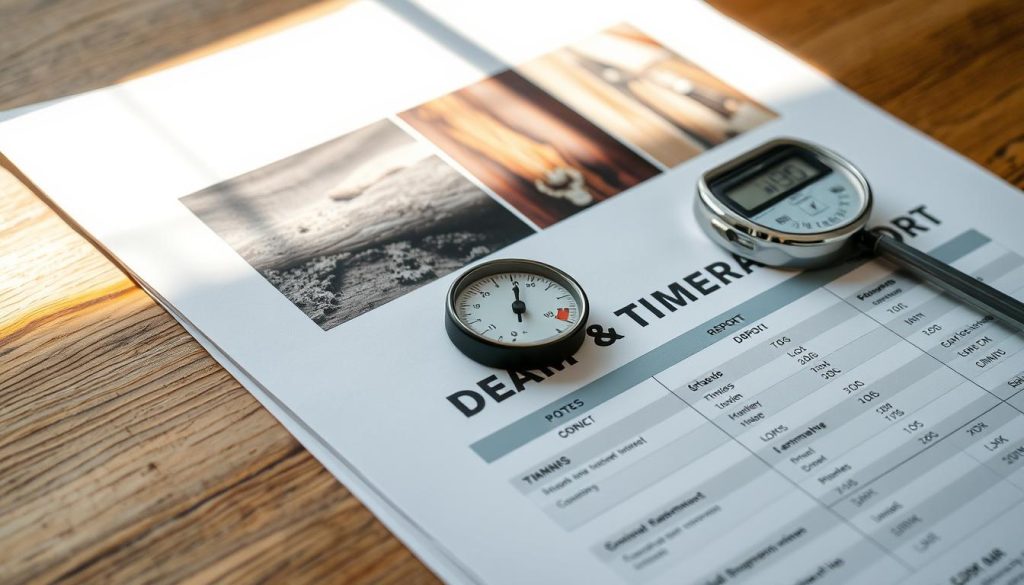
A damp and timber report aids in identifying these common problems and suggests necessary repairs or maintenance. It is imperative to select a qualified surveyor for an accurate report. By tackling these issues, homeowners can safeguard their property’s integrity and value.
| Common Problem | Cost of Repair |
|---|---|
| Rising damp | £2,500 (some damp-proofing) |
| Woodworm and dry rot | £1,500 (local treatment and repair) |
| Infestation | £3,000 (professional removal of invasive plants) |
Understanding Your Report Results
Upon receiving your damp and timber report, it is imperative to grasp the report’s findings to make well-informed decisions regarding your property. The document will detail the property’s state, highlighting any dampness, timber decay, or infestation. To fully benefit from the report, a thorough comprehension of the report format is essential.
Report Format and Sections
A standard report will encompass sections detailing the property’s condition, suggested repairs or maintenance, and estimated costs. It may also employ technical jargon, necessitating a solid grasp of these terms to accurately interpret the report’s content.
Interpreting Technical Terms
Terms such as condensation, rising damp, and timber decay may appear in your report. Familiarity with these terms aids in identifying the underlying causes of any issues, facilitating well-informed repair or maintenance decisions. The report will also outline recommended actions, which could involve repairs, maintenance, or further investigation.
Key considerations when deciphering your report results include:
- Inspect the report for any indicators of dampness, timber decay, or infestation
- Identify any repair or maintenance recommendations
- Review the estimated costs for proposed work
- Ensure comprehension of any technical terms employed in the report
By dedicating time to comprehend your report’s results and format, you will be equipped to make informed decisions regarding your property. This ensures that any issues are addressed promptly and efficiently.
| Report Section | Description |
|---|---|
| Introduction | Overview of the report and its purpose |
| Property Condition | Details of the property’s condition, including any signs of dampness or timber decay |
| Recommended Repairs | Recommendations for repairs or maintenance, including estimated costs |
Choosing a Qualified Surveyor
Opting for a qualified surveyor is critical when dealing with damp and timber issues. Such professionals possess the qualifications and accreditations necessary for their role. They are adept at identifying problems and delivering detailed reports. The Royal Institution of Chartered Surveyors (RICS) and the Property Care Association (PCA) are notable bodies that grant these accreditations.
In the UK, a surveyor’s credentials may include CSRT (Certified Surveyor in Remedial Treatment) or CSTDB (Certified Surveyor in Timber and Dampness). These certifications confirm the surveyor’s proficiency in conducting thorough assessments and compiling accurate reports. Selecting a surveyor with these credentials guarantees the reliability and precision of your damp and timber survey.
Required Qualifications
A surveyor must demonstrate a profound understanding of damp and timber issues. They should also possess the requisite qualifications. Key qualifications to seek may include:
- CSRT (Certified Surveyor in Remedial Treatment)
- CSTDB (Certified Surveyor in Timber and Dampness)
- Membership in the Property Care Association (PCA)
Industry Accreditations
Industry accreditations are equally vital when selecting a surveyor. These accreditations signify that the surveyor has met specific standards and possesses the necessary expertise. Look for the following membership accreditations:
- Royal Institution of Chartered Surveyors (RICS)
- Residential Property Surveyors Association (RPSA)
- Chartered Institute of Building (CIOB)
- PCA (Property Care Association)

Treatment Recommendations and Follow-up
Upon completion of the survey, the surveyor will outline treatment recommendations to rectify any identified issues. These may encompass repairs or maintenance, such as damp proofing or timber treatment, to avert further deterioration. Adherence to these recommendations is critical to maintain the property’s integrity and forestall future complications.
A subsequent follow-up survey may be imperative to verify the efficacy of the recommended interventions. This entails a re-examination of the property to detect any residual damage or degradation. By adhering to the treatment recommendations and participating in any requisite follow-up surveys, property owners can safeguard their investment and circumvent the need for expensive repairs.
Common treatment recommendations encompass:
- Damp proofing to bar moisture ingress into the property
- Timber treatment to thwart infestation or decay
- Repairs to damaged structures or fixtures
- Maintenance endeavours to forestall future maladies
Collaboration with a proficient surveyor and adherence to their treatment recommendations are instrumental in ensuring the property’s safety, security, and optimal condition. Regular follow-up surveys are equally beneficial, enabling the early detection of any emerging issues, which can significantly reduce both time and financial expenditure in the long term.
| Type of Survey | Cost | Duration |
|---|---|---|
| Damp and Timber Survey | £500-£1,000 | 1-3 hours |
| Specialist or Invasive Survey | £1,000 upwards | varies |
Conclusion: Making the Most of Your Damp and Timber Report
A detailed damp and timber report is a critical asset for homeowners and those considering purchasing a property. It offers essential insights into the condition of your home’s structure, enabling you to take proactive measures. This approach not only safeguards the integrity of your property but also prevents the financial burden of future repairs. It ensures the long-term stability and value of your investment.
The cost of such a report, ranging from £500 to £1,000, is a small price to pay for the wealth of information it provides. It delves into moisture patterns, timber health, and identifies areas of concern. With over 150 years of combined experience among our surveyors, you can be assured of a meticulous evaluation and actionable advice.
Addressing issues like penetrating damp, condensation, or rising damp is made straightforward by the report’s guidance. It empowers you to implement effective solutions, preserving your property’s value and protecting your investment. By leveraging this resource, you can rest assured that your home remains a safe and structurally sound environment.
FAQ
What is a damp and timber report?
A damp and timber report is a detailed document that examines a property’s condition. It highlights any dampness, timber decay, or infestation issues. A qualified surveyor conducts this analysis, providing recommendations for repairs or maintenance.
Why are damp and timber surveys important?
These surveys are vital for homeowners, buyers, and sellers. They offer a thorough analysis of the property’s condition. This highlights any issues that could affect its value or structural integrity.
When should I get a damp and timber report done?
It’s advisable to obtain a damp and timber report when buying a property. It’s also necessary if you suspect dampness, timber decay, or infestation in your current home.
How much does a damp and timber report cost in the UK?
The cost of a damp and timber report in the UK varies widely. It can range from £500 to £1,000 or more. This depends on the property’s size, location, and the extent of the inspection needed.
What factors influence the cost of a damp and timber report?
Several factors affect the cost of a damp and timber report. These include the property’s size and type, its location, and the scope of the investigation required.
What does the survey process involve?
The survey process involves a thorough inspection of the property. It includes identifying dampness, timber decay, or infestation. The surveyor also assesses the property’s structural integrity.
What does the surveyor check during the inspection?
The surveyor checks the property’s moisture levels and timber components. They also evaluate the building’s overall structural integrity.
What types of problems can damp and timber reports identify?
These reports can identify dampness, timber decay, and infestation. These issues can stem from poor maintenance, water damage, or pest infestation.
How do I interpret the results of a damp and timber report?
The report details the property’s condition, including any dampness, timber decay, or infestation. It also provides recommendations for repairs or maintenance. Understanding the report format and technical terms is essential for effective implementation of the recommended actions.
How do I choose a qualified surveyor?
When selecting a surveyor, ensure they have the necessary qualifications and accreditations. Look for membership to RICS, CIOB, RPSA or PCA.
What happens after the survey is complete?
After the survey, the surveyor will outline treatment recommendations and follow-up actions. It’s critical to follow these recommendations to maintain the property’s condition and prevent future issues.


